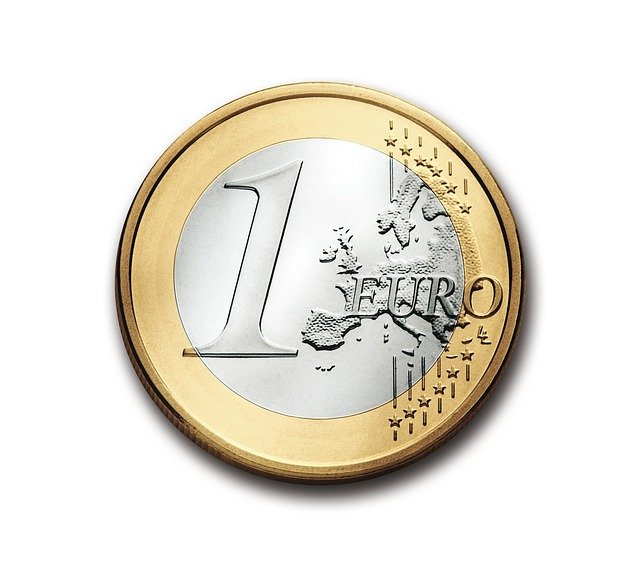5 Valuable Coins in Circulation
While most people view coins as mere pocket change, certain circulating pieces hold significant value beyond their face worth. Numismatists and casual collectors alike continue to discover rare coins in everyday transactions that can be worth hundreds or even thousands of dollars. Understanding which coins to watch for could turn a routine trip to the grocery store into a profitable treasure hunt.

The thrill of finding valuable coins in everyday circulation remains one of the most accessible forms of treasure hunting available to the general public. Unlike many collectibles that require significant initial investment, coin collecting can begin with nothing more than the change in your pocket. While most circulating coins are worth only their face value, certain specimens with minting errors, low production numbers, or specific characteristics can be worth substantially more to collectors and investors.
Valuable Quarters Still Found in Circulation
Among the most sought-after coins in circulation today are certain quarters that carry significant premiums. The 1932-D and 1932-S Washington quarters represent the first year of the Washington quarter design and had remarkably low mintages. Even in worn condition, these coins can fetch $100 or more. More recent treasures include specific State Quarters with minting errors. The 2004-D Wisconsin quarter with an extra leaf on the corn stalk can command $200-$300 in circulation condition. Diligent searchers examining their change carefully may still find these valuable quarters in everyday transactions, though their numbers diminish yearly as collectors remove them from circulation.
Lincoln Cents Worth More Than Face Value
Despite being the lowest denomination in American currency, certain Lincoln cents carry values hundreds or thousands of times their face value. The 1909-S VDB cent, featuring designer Victor David Brenner’s initials, had a limited mintage of just 484,000 pieces and can be worth $700+ even in circulated condition. The 1955 Doubled Die Obverse cent, showing dramatic doubling on the date and inscriptions, remains one of the most famous minting errors, valued at $1,000+ even in worn condition. More accessible finds include 1969-S doubled dies and 1972 doubled dies, both of which occasionally surface in circulation and can be worth hundreds of dollars when authenticated.
Silver Coins That May Still Be Found
Although silver was removed from regular U.S. coinage after 1964, these valuable silver coins occasionally resurface in circulation. Any dime, quarter, or half dollar dated 1964 or earlier contains 90% silver, giving these coins significant intrinsic value beyond their face amount. At current silver prices, a single silver quarter is worth approximately $4-5 in metal content alone. Kennedy half dollars from 1965-1970 contain 40% silver and are worth about $3-4 each. While most silver coins have been removed from circulation through decades of searching, they occasionally resurface from old collections or piggy banks, making them valuable finds for alert coin handlers.
Buffalo Nickels and Mercury Dimes
Buffalo nickels (1913-1938) and Mercury dimes (1916-1945) represent classic American coin designs that occasionally surface in circulation. While most examples have dates worn smooth from extensive use, those with visible dates can be worth $1-2 each for common dates, with certain key dates worth substantially more. The 1916-D Mercury dime is particularly valuable, worth thousands even in worn condition. The 1937-D Buffalo nickel with the “three-legged buffalo” error (missing one leg due to over-polishing of the die) can be worth $500+ even in circulated condition. These older designs are becoming increasingly scarce in circulation but still appear occasionally in coin rolls or old collections entering the market.
Modern Error Coins Worth Watching For
Modern minting errors continue to create valuable coins that enter circulation. The 2004-2005 Wisconsin state quarter errors, 2007 Washington presidential dollars missing edge lettering, and various “off-center” strikes represent opportunities for sharp-eyed collectors. The 2009 Lincoln Bicentennial cent errors and various “die clash” errors on modern coins can also carry significant premiums. Modern coins struck on incorrect planchets (blanks) can be particularly valuable, such as dimes struck on penny blanks or quarters struck on nickel blanks, often worth hundreds or even thousands of dollars to error collectors.
Expected Value Increases for Rare Coins
When considering coins as potential investments, understanding projected values is essential for collectors and investors alike. While past performance doesn’t guarantee future results, certain coins have shown consistent appreciation patterns.
| Coin Type | Current Value Range | Projected Value (2025) | Key Factors Affecting Value |
|---|---|---|---|
| 1909-S VDB Cent | $700-$2,500 | $800-$3,000 | Low mintage, collector demand |
| 1955 Doubled Die Cent | $1,000-$3,500 | $1,200-$4,000 | Famous error, strong demand |
| 1932-D Quarter | $100-$500 | $120-$600 | Key date, first year of design |
| Silver Quarters (pre-1965) | $4-$5 | $4.50-$7 | Silver content, market prices |
| 2004-D Wisconsin Error | $200-$300 | $250-$400 | Modern error, limited quantity |
Prices, rates, or cost estimates mentioned in this article are based on the latest available information but may change over time. Independent research is advised before making financial decisions.
Collecting circulating coins offers a unique opportunity to find valuable treasures at face value. While the most valuable specimens become increasingly difficult to find in everyday transactions, new collectors continue to discover worthwhile coins through patient searching and knowledge of what makes certain pieces valuable. Whether searching through rolls from banks, examining change from daily transactions, or inheriting collections from family members, understanding which coins carry premium values transforms ordinary pocket change into potential investments worth far more than their face value.




